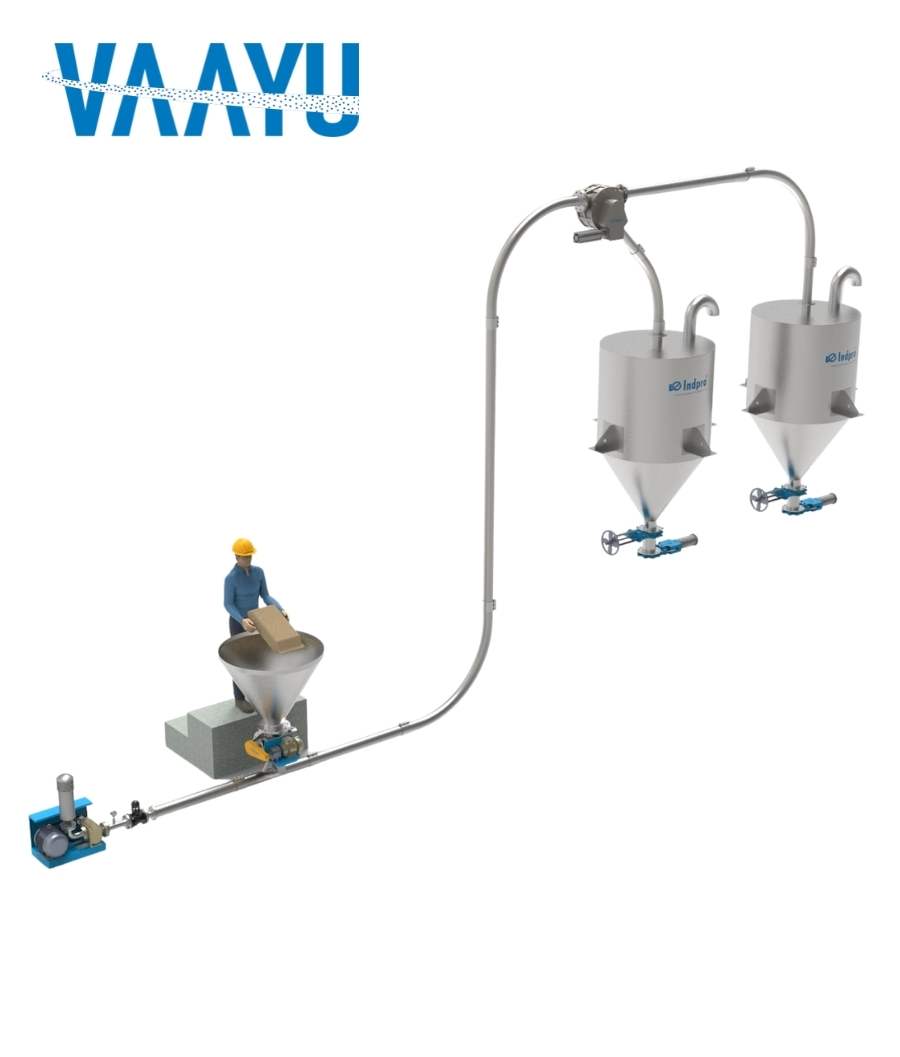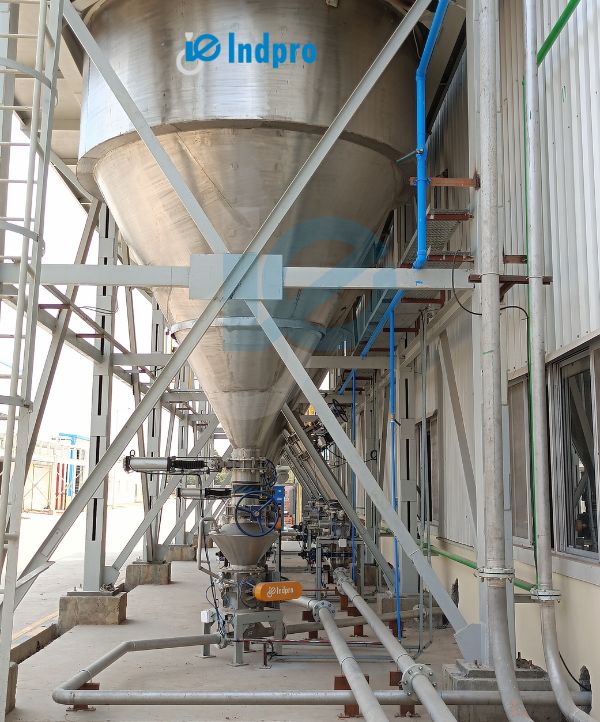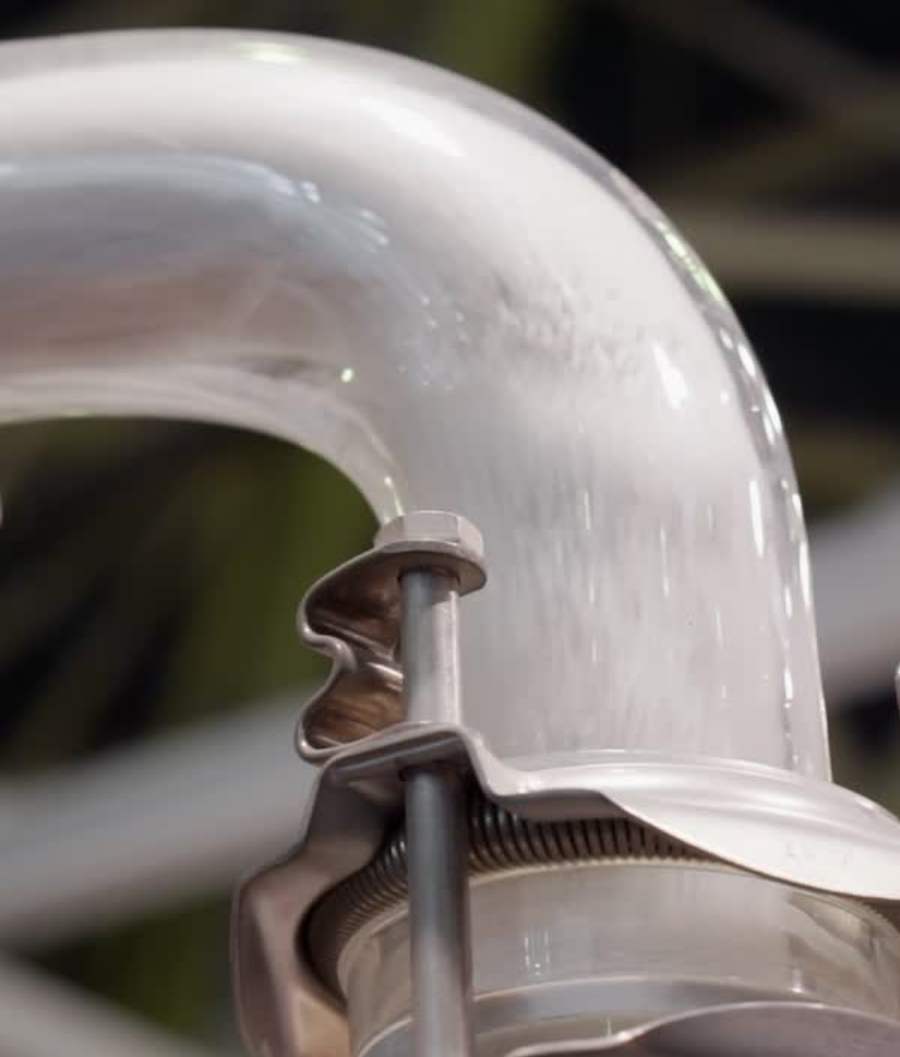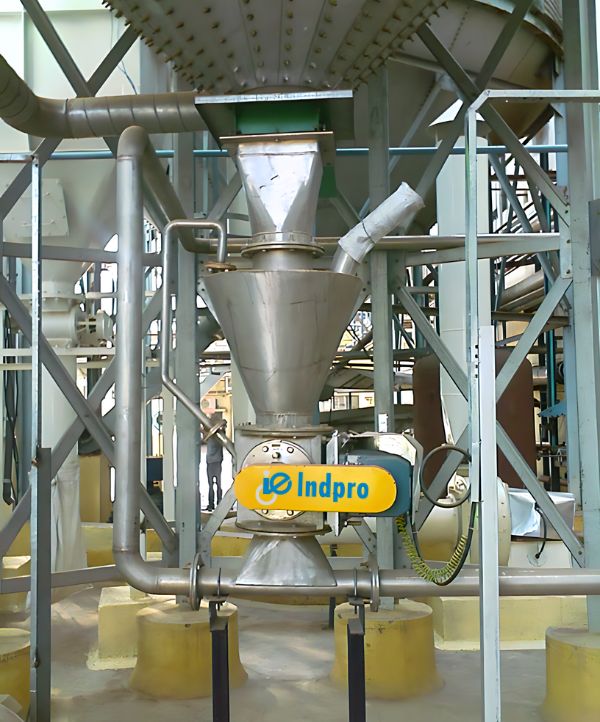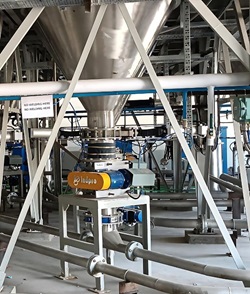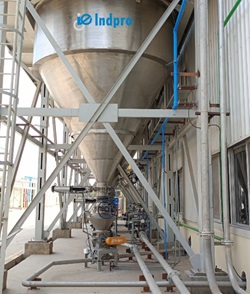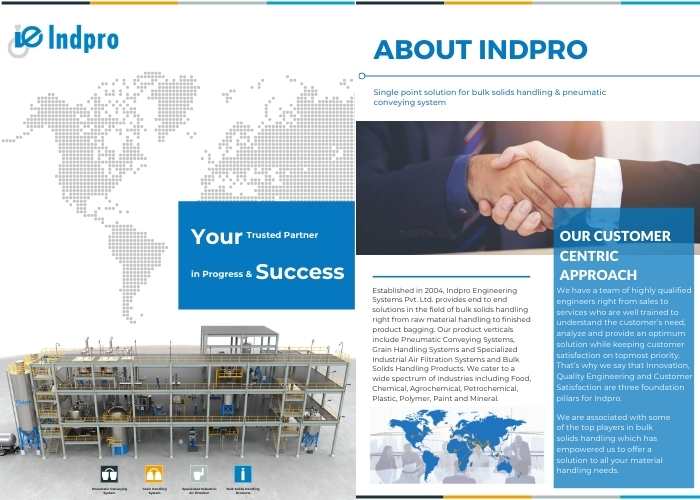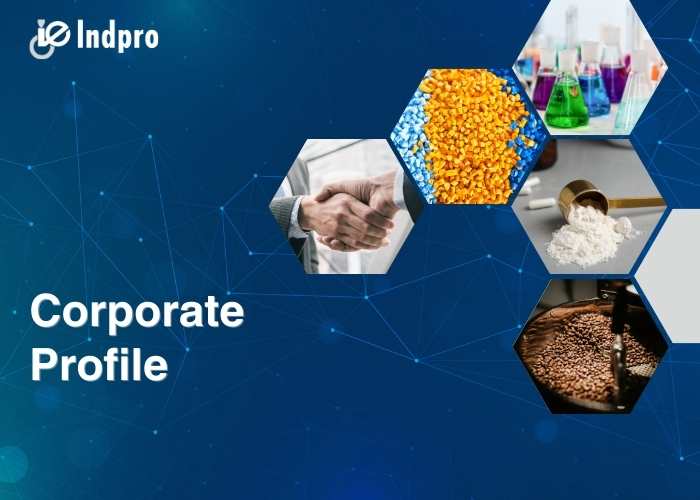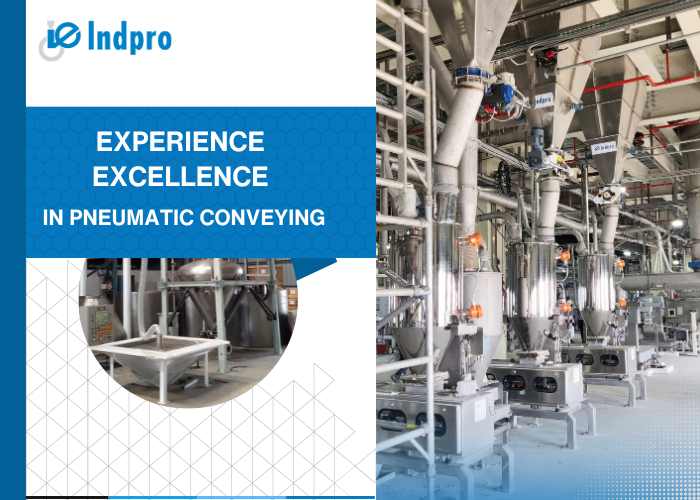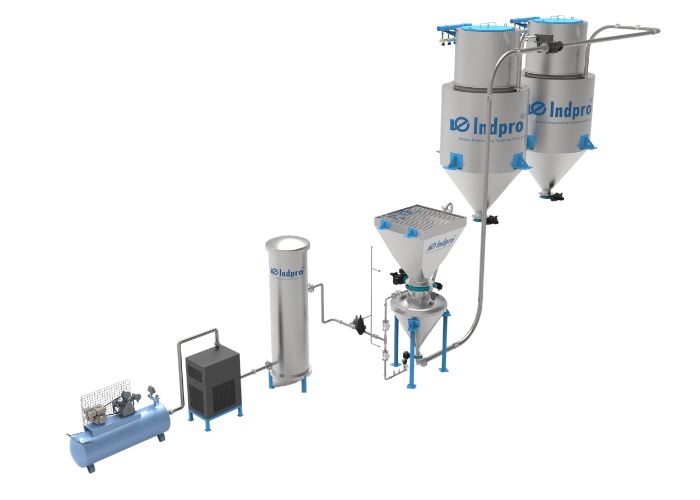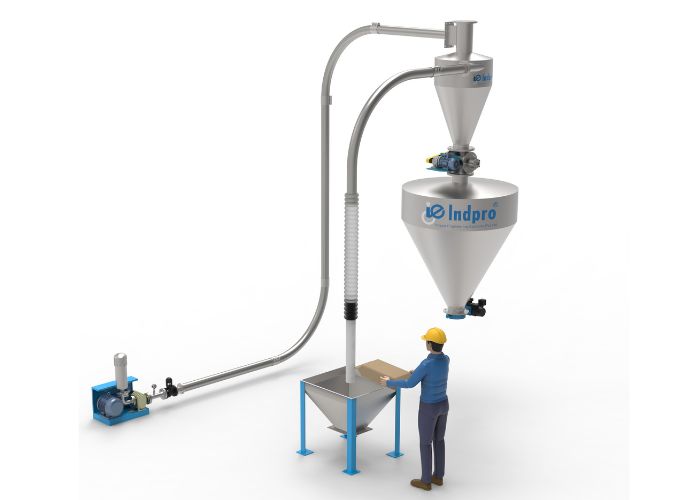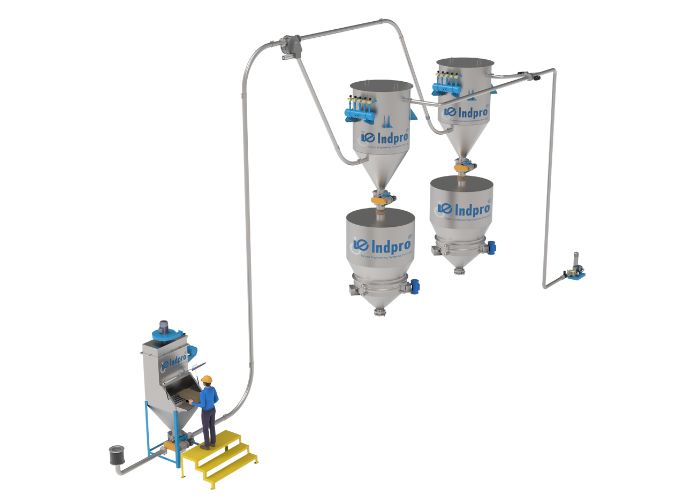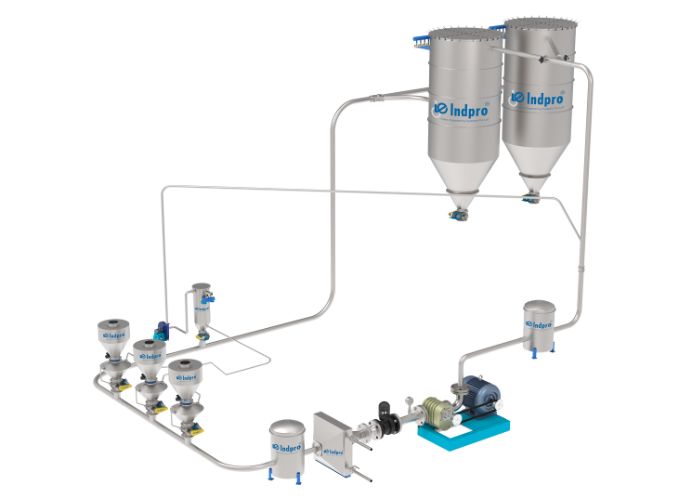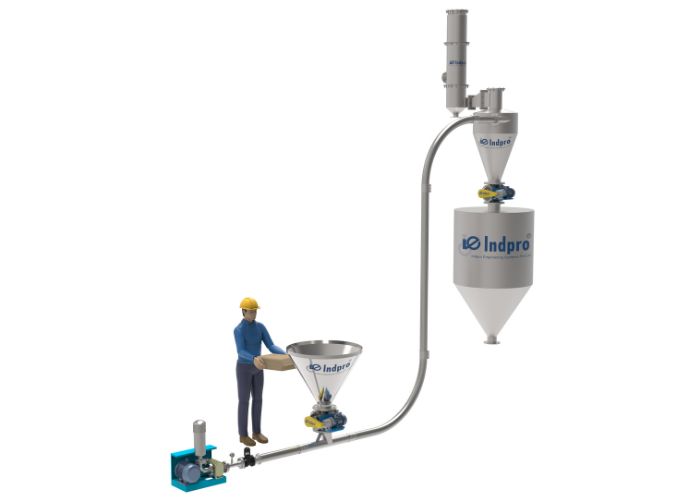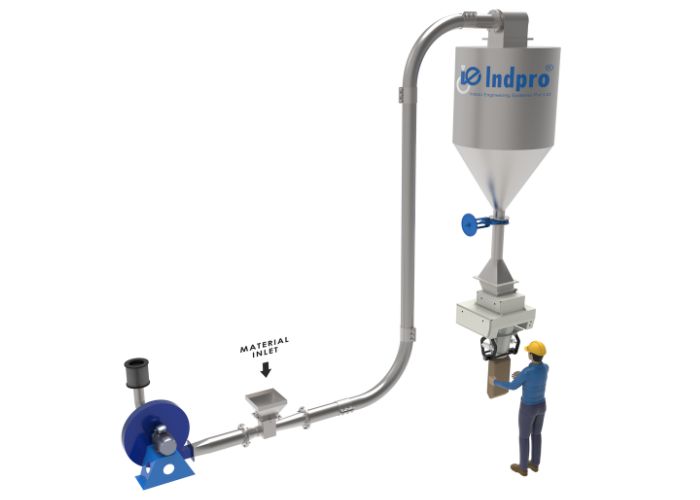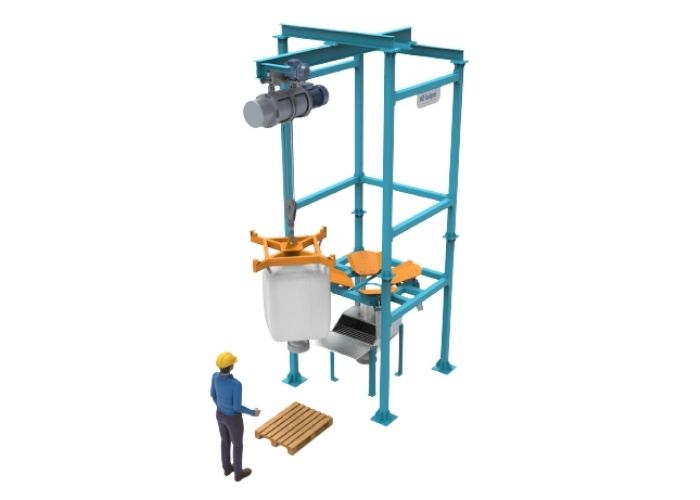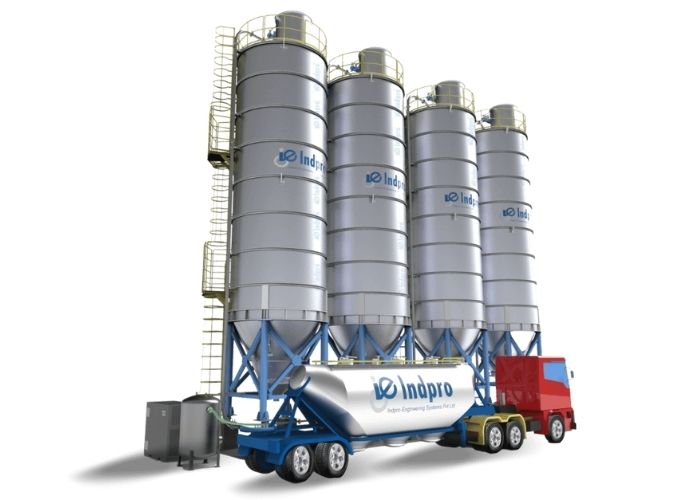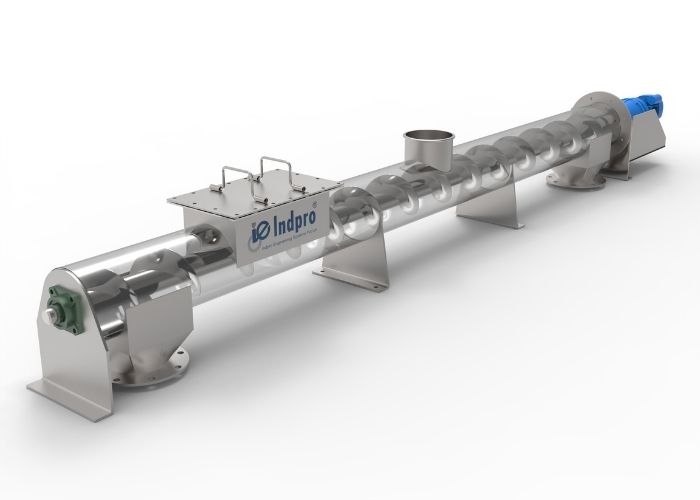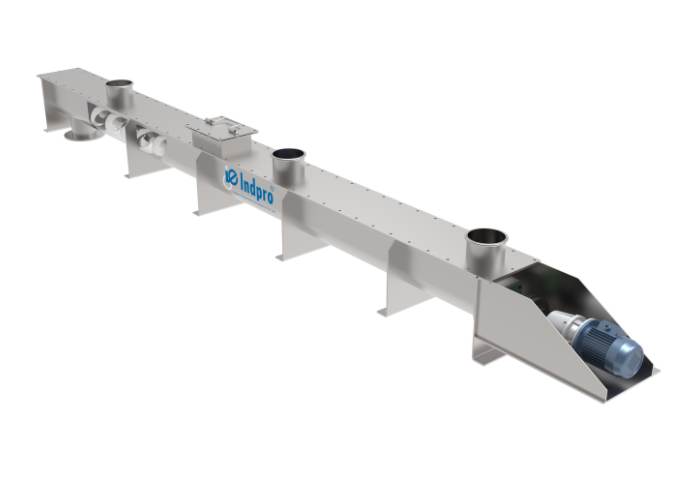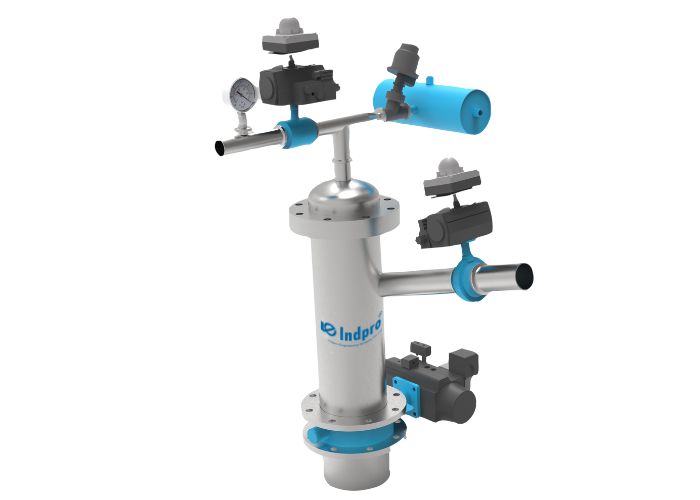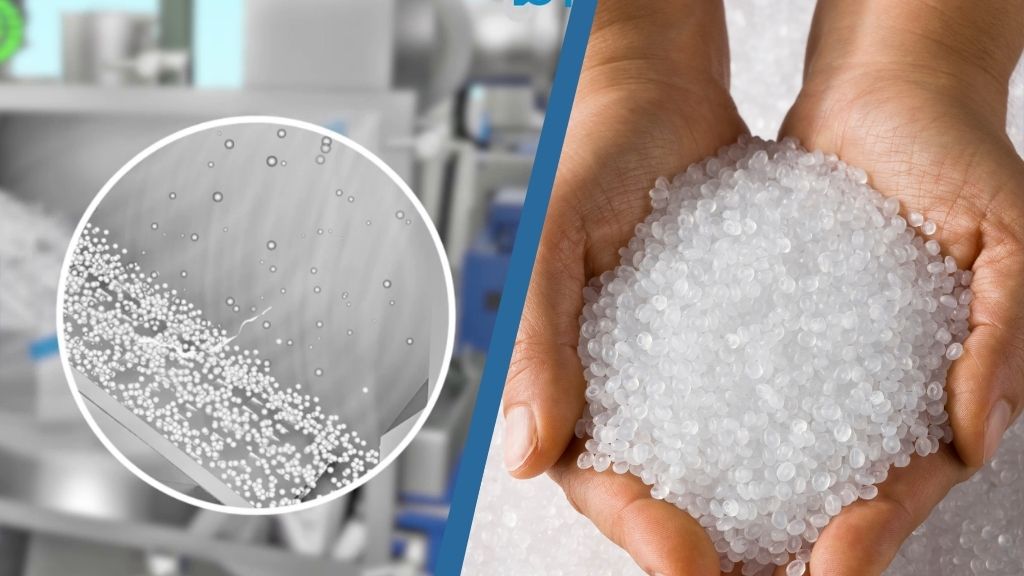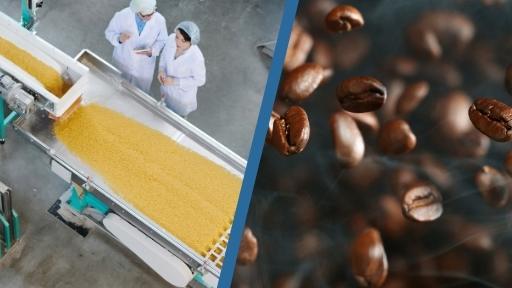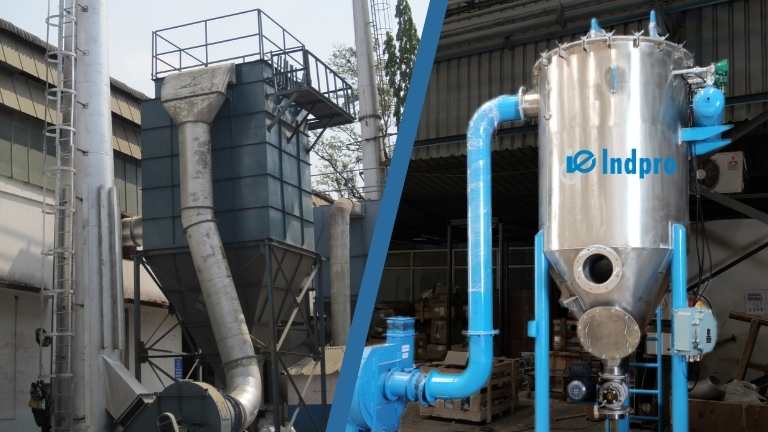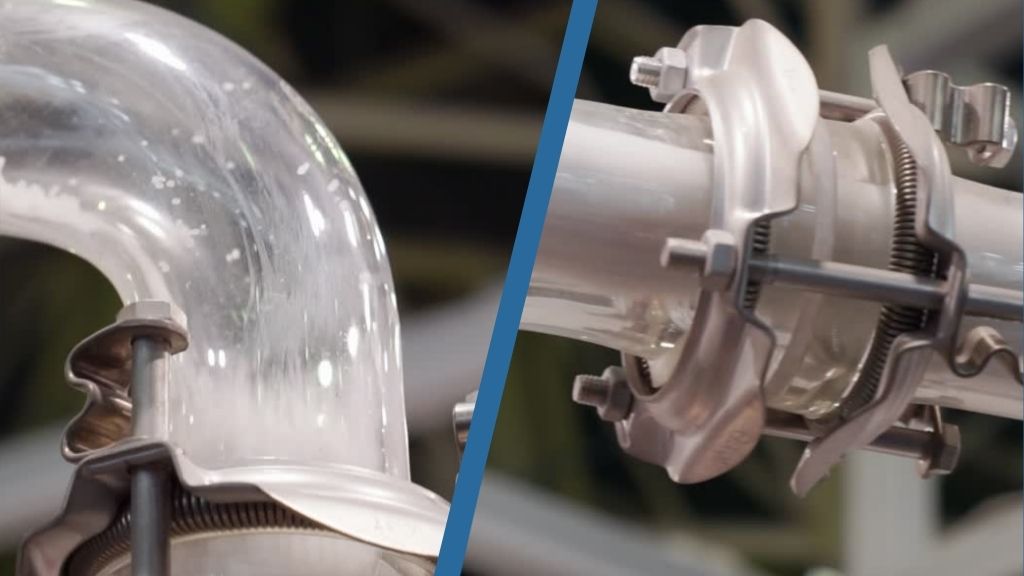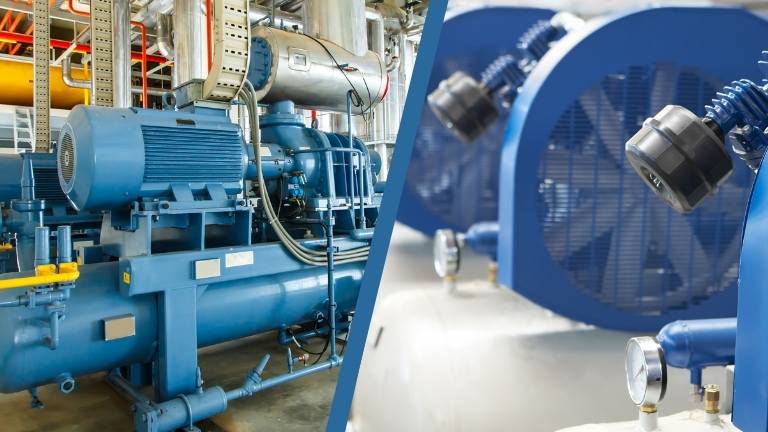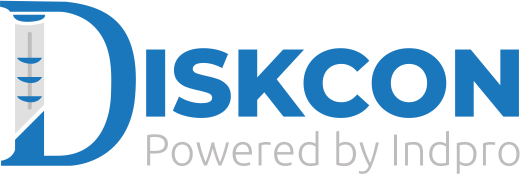Dilute Phase Pneumatic Conveying System (Pressure)
Indpro is the leading solution provider for dilute phase pneumatic conveying systems. Pressure type dilute phase conveying systems use positive air pressure to move material from one point to another.
The lean phase conveying system has its application in chemical, food, pharmaceuticals, plastic, polymers, and breweries. The dilute phase conveying systems are usually provided when particle size distribution varies from microns to millimeters.
Dilute phase pneumatic conveying is low-pressure high-velocity systems that have the utmost flexibility for the kind of range of materials that can be handled. The airflow is generated with air compressors or blowers. There is a wide range of materials that can be conveyed in the dilute phase pneumatic conveying system.
Dilute phase/Lean Phase is a suspension flow where in the material to be conveyed is introduced into a moving air stream inside a pipeline. The transport gas velocities are in the range of 15 - 30 m/s depending on the product characteristics. It uses high velocity, low pressure, and low product to air ratios. A well designed pneumatic conveying system will have this velocity well optimized and hence will minimize energy consumption. The conveyed product is totally dispersed in the gas flow.
Product Features

Specification
-
Conveying Rate
Low to High, typically from 1 - 40 tons/hr
-
Air Mover
Positive displacement tri-lobe blower / FD fan / Ring channel blower
-
Conveying Velocity
15 m/s - 25 m/s
-
Operating Pressure
Upto 1000 mbar(g)
-
Conveying Distance
Upto 100 - 200 mtrs
-
Solids Loading Ratio
1 to 10
20+years of
Automating your bulk material transfer
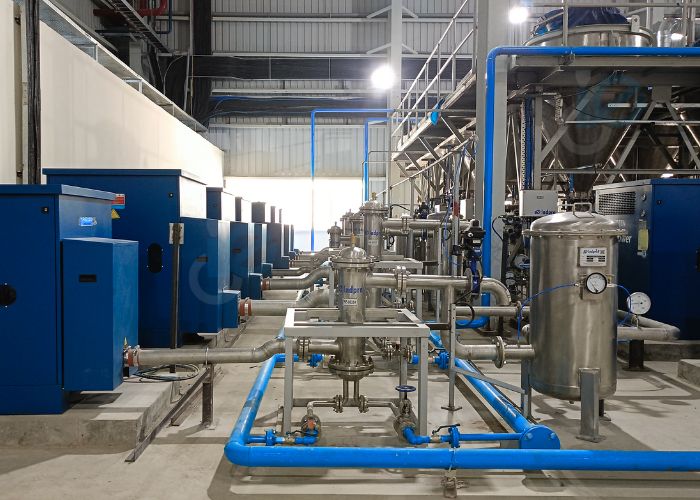

Looking for something more?
Our Dilute Phase Pneumatic Conveying System can very well be integrated with other system solutions we offer. You can speak with our experts to know more about how we can integrate it with our Pneumatic Conveying Systems, Air Pollution Control Systems or Bulk Solids Handling Systems.
CONTACT USRelated Products
There are many more products and systems which you can explore
Pneumatic Conveying System FAQ's
Pressure conveying, also known as positive pressure conveying, is a method of transporting materials, such as powders, granules, and small pellets, through a pipeline using a gas, such as air, as the conveying medium. In pressure conveying, the material is pushed through the pipeline by a fan, blower, or compressor, which creates a positive pressure inside the pipeline.
This positive pressure forces the material to move through the pipeline and can be used to transport materials over long distances and even upwards. Pressure conveying systems are typically used in industries such as food processing, petrochemicals, and chemical manufacturing.
Dilute phase conveying is another term for lean phase conveying. In dilute phase conveying, the material is suspended in the gas and transported in a dispersed or fluidized state. The gas velocity is high, typically greater than 15 m/s, and the material is transported in a dilute phase or cloud. This method of conveying is characterized by high gas to material ratios, high material velocities, and high pipeline pressures.
It is typically used for materials that are free-flowing and non-abrasive. This method of conveying can be used over short distance and is typically used in applications where low material degradation, low maintenance and low energy consumption are the main requirements.
There are several types of pneumatic conveying systems that are commonly used, including:
Dilute phase conveying: This type of system uses high-velocity air to suspend and transport materials through a pipeline. It is typically used for materials that are irregularly shaped, cohesive and have a variation in bulk density.
Dense phase conveying: This type of system uses high-pressure air to move materials through a pipeline. It is typically used for materials that are fragile, abrasive, or have a high bulk density.
Vacuum conveying: This type of system uses vacuum less than atmospheric pressure to transport materials through a pipeline. It is usually used for small-distance applications with multiple pick-up points where dusting could be a concern.
Pressure conveying: This type of system uses pressure more than atmospheric pressure to transport materials through a pipeline. It is usually used for long-distance applications with multiple discharge points.
Combination systems: This type of system uses a combination of the above methods to convey materials.
Latest blog post
We would love for you to know more about what goes behind designing of our systems and our considerations for the various industries we cater to.

